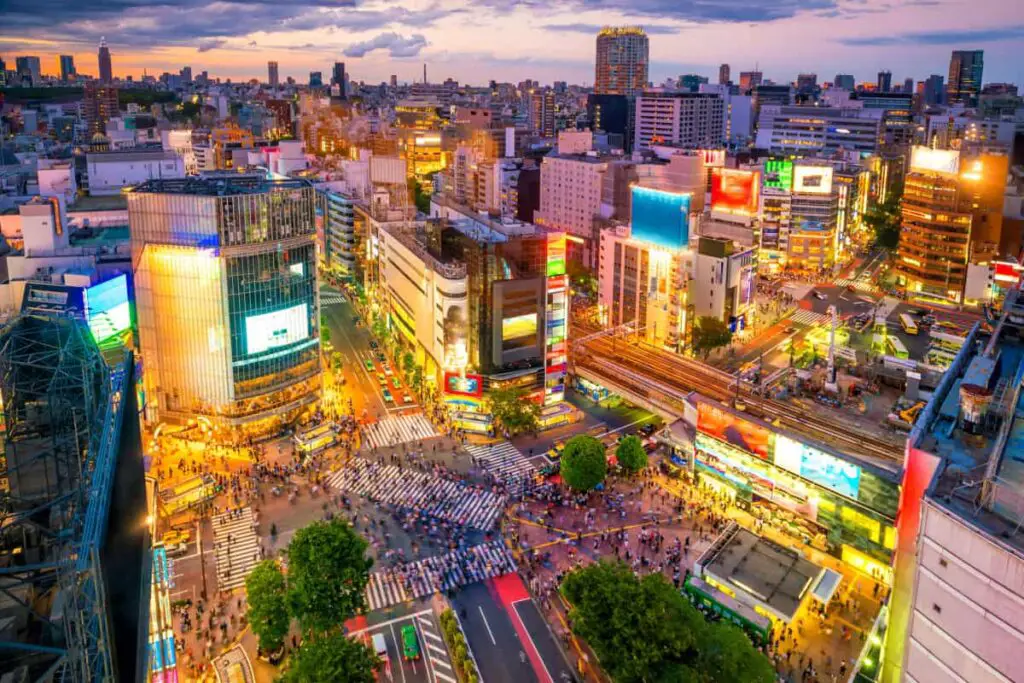The top 20 best sports for photography in Tokyo have been listed below:
- The Nakameguro River
- The Tokyo Skytree
- Sensoji Temple
- Shinjuku Kabukicho
- Takeshita Street
- The Tokyo Metropolitan Government Building
- Hamarikyu Gardens
- The Tokyo Tower
- The Roppongi Hills Mori Tower Observation Deck
- The City View from the Top of Roppongi Hills
- Meiji Shrine
- Soho, Odaiba
- The Nakagin Capsule Tower
- Tokyu Plaza Omotesando
- Tokyo’s Rainbow Bridge
- The Hie Jinja Shrine
- Harajuku
- Akihabara
- Yoyogi Park
- The Shibuya Crossing
Continue reading to discover where the top 20 places for photographers and photographic points in Tokyo are, as well as why they’re considered the best.
The Nakameguro River
The Nakameguro River is said to be the best place to capture Tokyo in all of its changing seasons. In the spring, pink cherry blossoms frame the river.
It is a lovely location for photography in Tokyo as the leaves change color in the fall. In the winter, the trees are adorned with beautiful lights.
Nakameguro River Via Tokyo Convention & Visitors Bureau
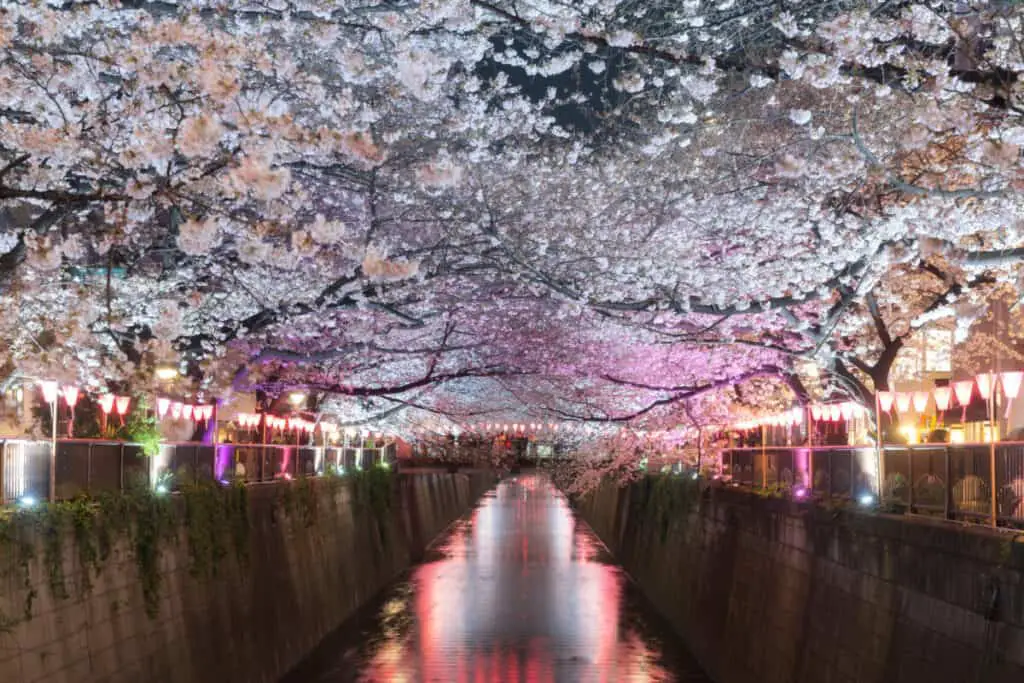
The Tokyo Skytree
Tokyo Skytree, the city’s newest landmark, has been one of the city’s top attractions since its debut in 2012. From afar, the tower appears stunning, as does the view from its observatories, which are placed at 1148 and 1476 feet and are clearly among the tallest observation decks in the world.
The tower itself is an excellent focal point for a Tokyo cityscape photograph. To take a unique photo, locate a vantage point from which you may shoot the Skytree from another structure.
Otherwise, there are sites closer to the tower’s base. These may be used to take pictures of the tower from the ground.
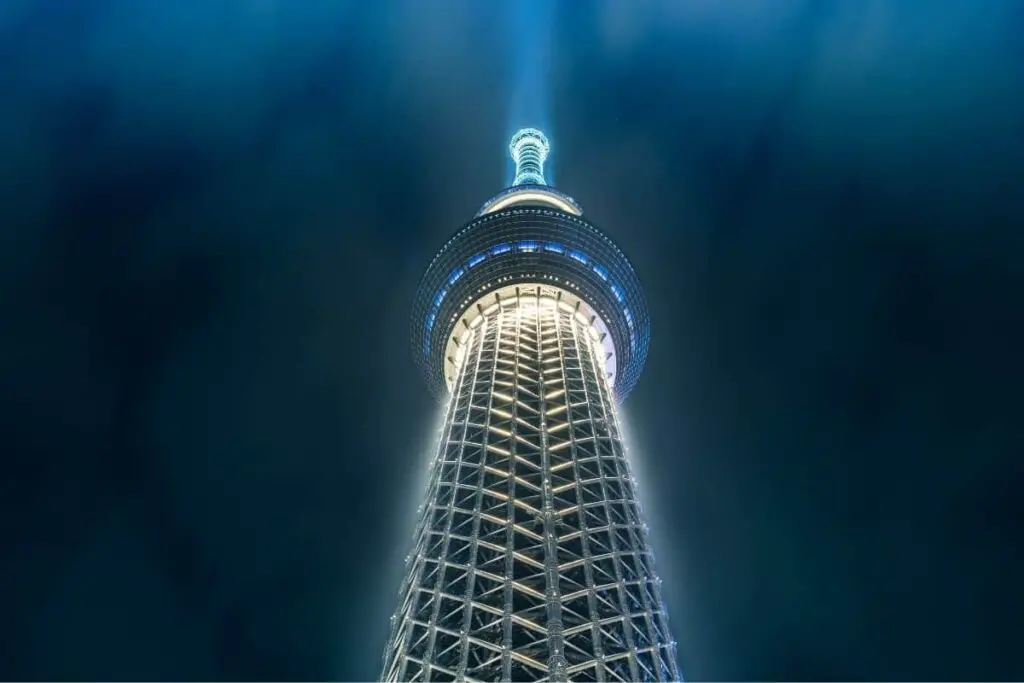
Sensoji Temple
Sensoji Temple is Tokyo’s oldest temple, dating back to the 7th century. The temple complex comprises two significant gates, an approach, a five-story pagoda, and the temple’s main hall.
When you arrive at Sensoji Temple, the first thing you notice is the Kaminarimon Thunder Gate, which serves as the temple’s main entrance.
The bright red gate is adorned with a massive crimson lantern with Kanji inscriptions in the center and two guardians on either side.
Sensoji Temple Official Website
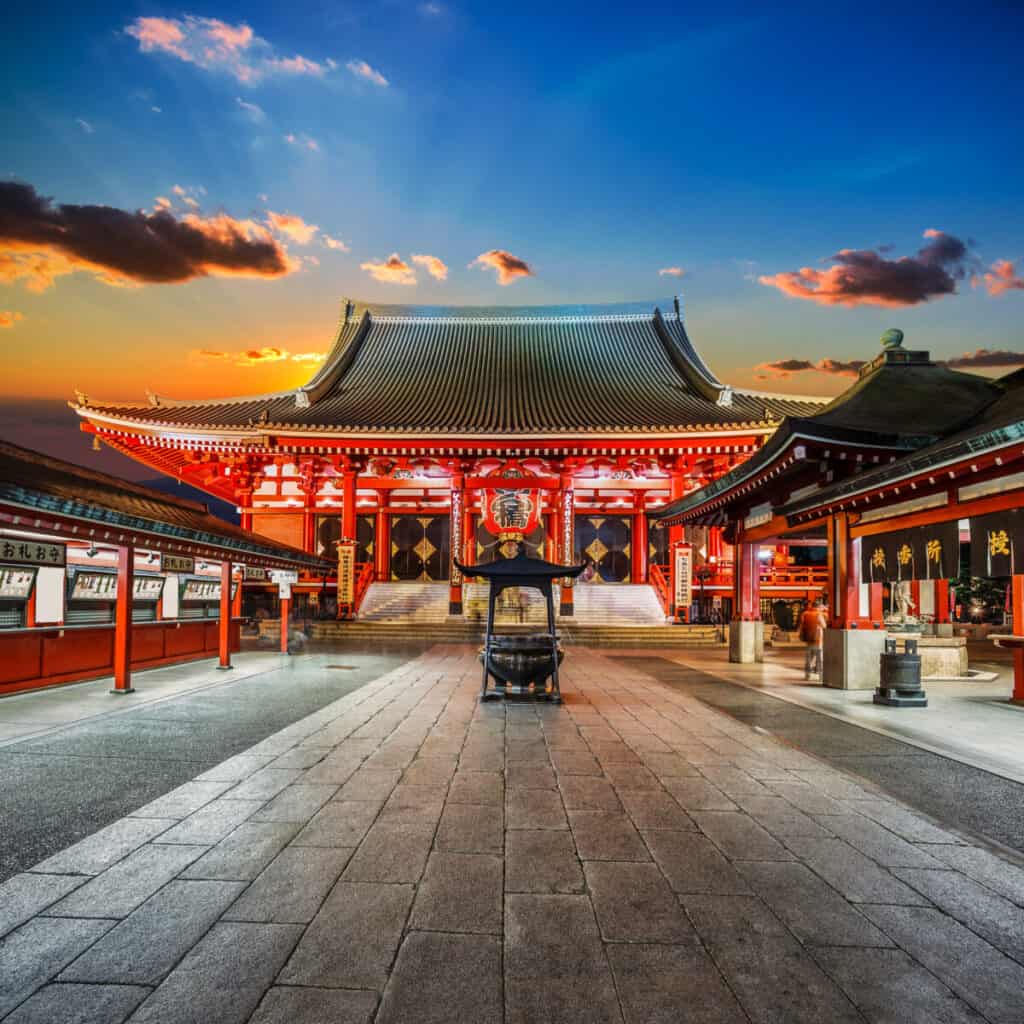
Shinjuku Kabukicho
Kabukicho is a lively nightlife zone in the Shinjuku neighborhood. This is where you’ll locate most of the neon lights in a city full of them. It’s worth visiting here in the evening for the neon lights.
Come during the day as well. You may shoot the famed Godzilla as it mounts the area’s lofty skyscrapers.
If you’re searching for an excellent site to photograph at night, this is the place to go. The neighborhood is renowned as “the place that never sleeps.” Kabukicho tends to become brighter and more vibrant as the night progresses.
Shinjuku Kabukicho Location Via Google Maps
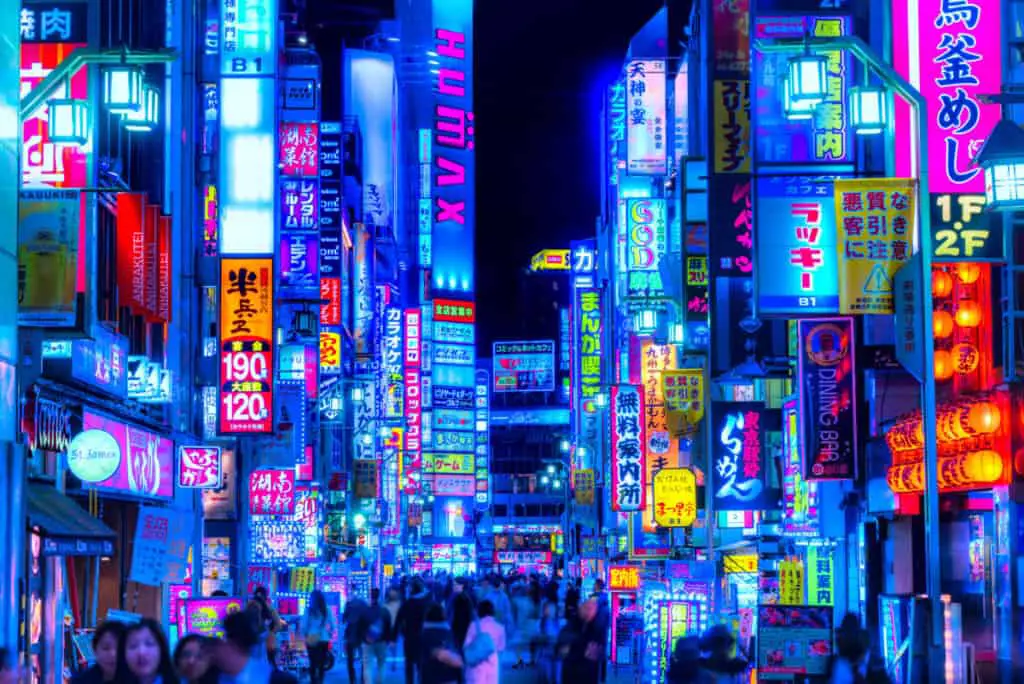
Takeshita Street
Takeshita Street in Harajuku is regarded as one of the most beautiful streets in Tokyo.
Cuteness abounds, from kawaii clothing businesses to pink crepe booths and colorful cotton candy vendors.
Crepe shops are among the most popular selfie hangouts in the area.
Takeshita Street Location Via Google Maps
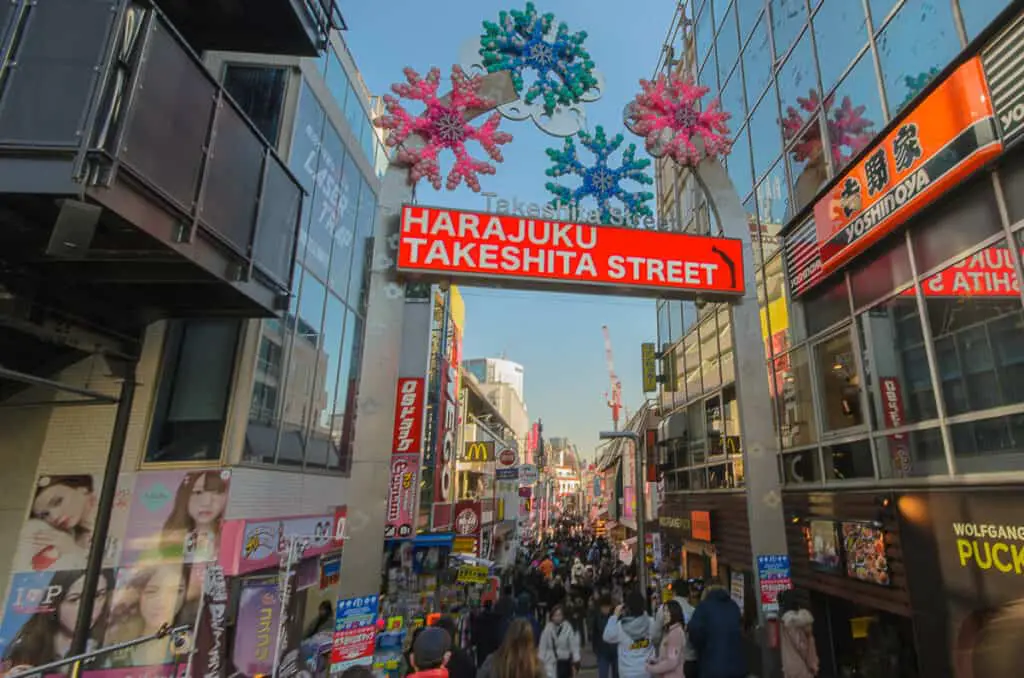
The Tokyo Metropolitan Government Building
Tourists visit the Tokyo Metropolitan Government Building for some of the best photographs in Tokyo since it provides panoramic views of the city and beyond.
The 797 foot-tall structure contains two towers, each with a 662 foot-tall observatory. It was Tokyo’s tallest structure until 2007 when the Midtown Tower surpassed it.
Metro Government Building Official Website
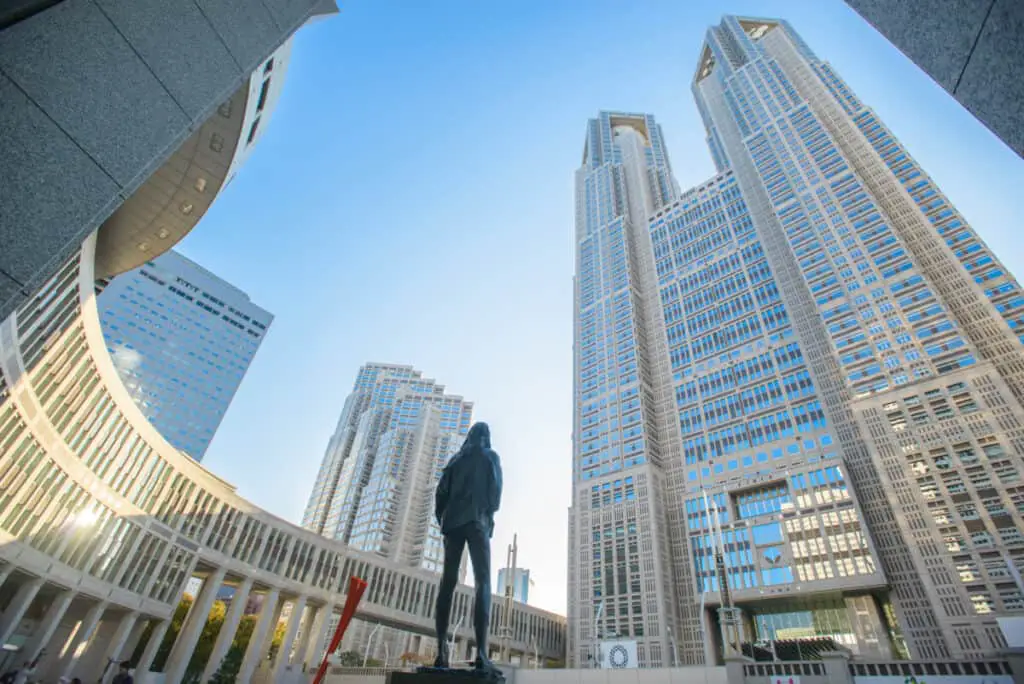
Hamarikyu Gardens
The 61-acre Hamarikyu Gardens stretch back to the 1600s. The view is characterized by flower meadows, which contrast sharply with the surrounding business center.
The gardens are designed to be drenched in a new color each season. The Gardens are also a popular site for wedding photos in the area.
Hamarikyu Gardens Official Website
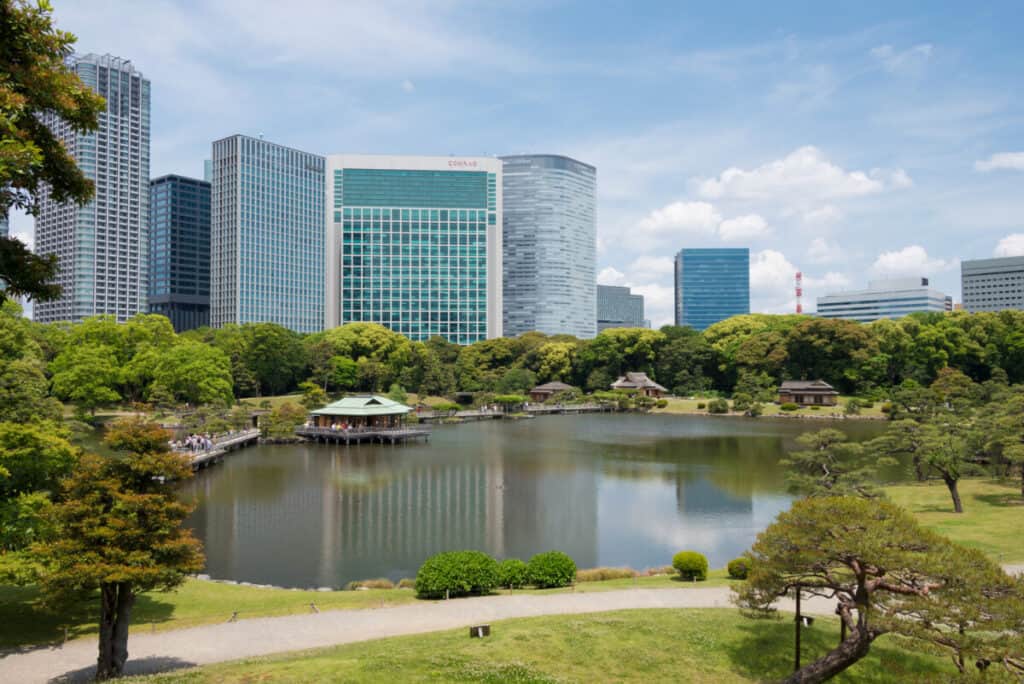
The Tokyo Tower
Tokyo Tower is the world’s highest self-supported steel tower, standing 1092 feet tall in the heart of Tokyo and 42 feet higher than its model, the Eiffel Tower.
The main deck of the Tokyo tower, at 492 feet, is accessible via an elevator or a 600-step stairway.
Despite being only at a reasonable height, the observatory gives an interesting perspective over the city due to the tower’s strategic location.
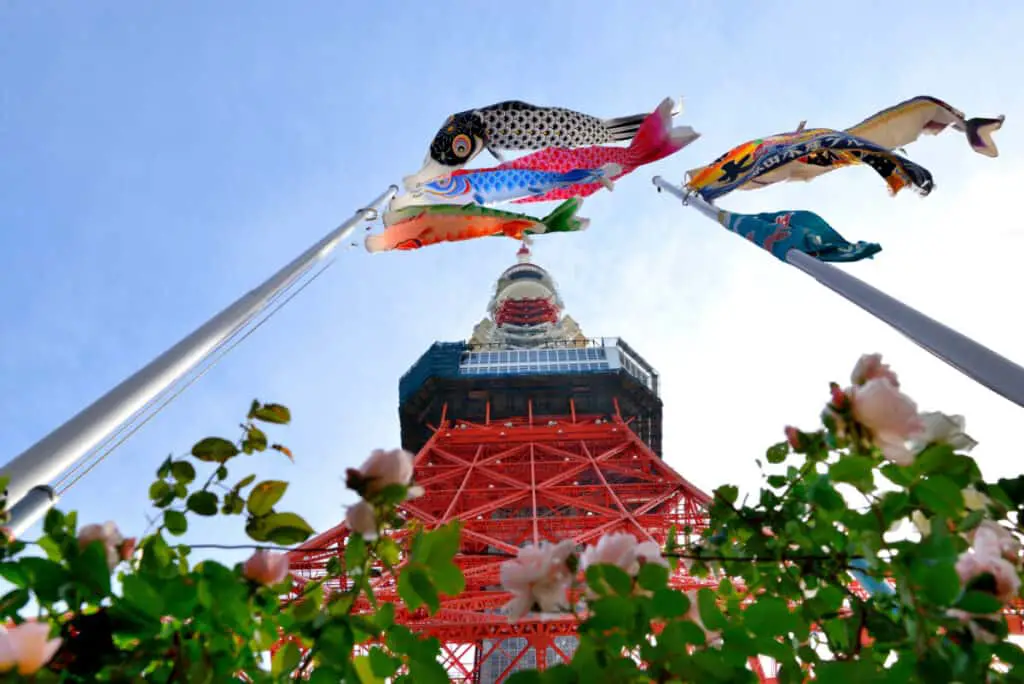
The Roppongi Hills Mori Tower Observation Deck
From the Roppongi Hills Mori Tower, you can get a fantastic perspective of Tokyo. It contains an 820 feet-high viewing gallery and a 88 foot-high outdoor sky deck.
The Roppongi Hills Mori Tower is considered one of the best places in the city to obtain a clear perspective of the city’s economic sectors and a view of Tokyo Tower.
It is recommended that you go to see the view of Tokyo Tower. The most significant time to photograph here is throughout the day or as the blue hour approaches. If you’re photographing from an inside viewing location, be mindful of reflections on the glass you’re photographing through.
Roppongi Hills Official Website
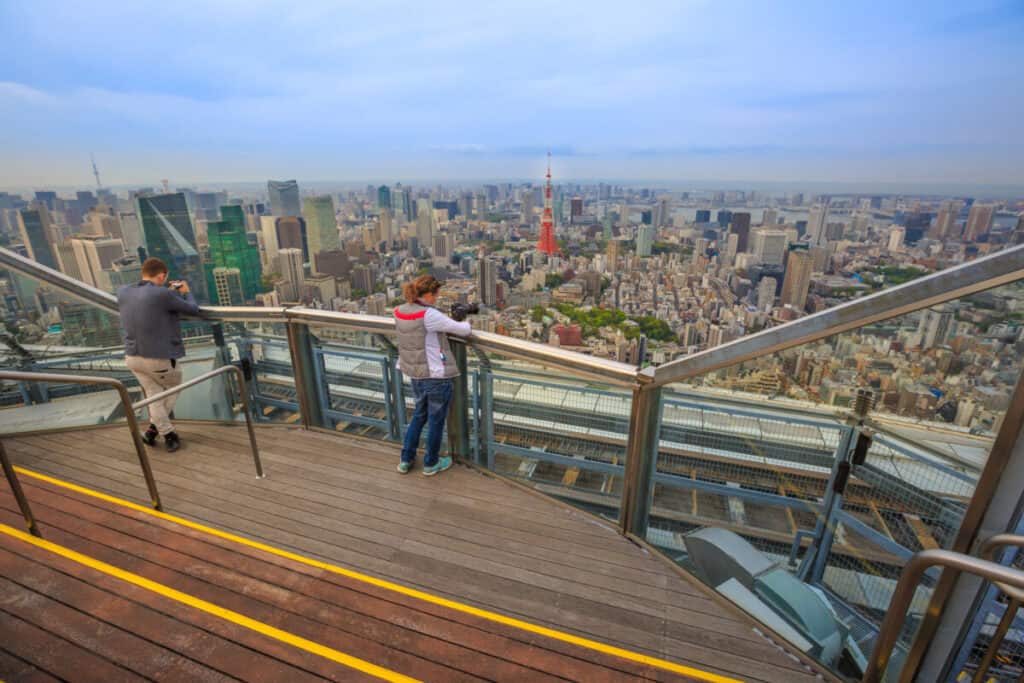
The City View from the Top of Roppongi Hills
From the roof of Roppongi Hills, you can see the whole metropolis of Tokyo.
Among the major landmarks seen from this vantage point are the Tokyo Tower and the Tokyo Skytree. Mount Fuji may be viewed on a clear day.
Meiji Shrine
Meiji Shrine is devoted to Emperor Meiji’s and Empress Shoken’s deified souls. Meiji Shrine and Yoyogi Park, both located near the JR Yamanote Line’s famous Harajuku Station, provide a significant woodland space amid the highly built-up metropolis.
Walking routes abound on the expansive temple grounds, perfect for a quiet stroll.
One will want to photograph the shrine’s gorgeous wooden Torii gate, which sits at the entrance.
The Sake Barrels, which lines up nicely in the middle of the shrine’s primary hall approach, is another favorite photo point at Meiji Shrine. Local sake makers have donated the colorful Sake barrels.
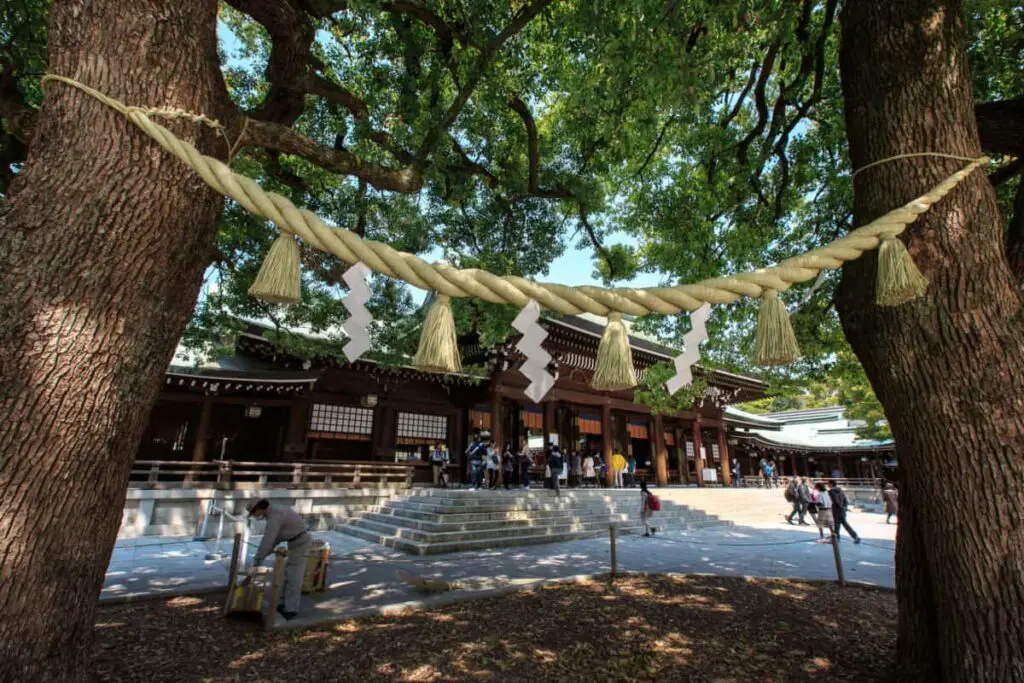
Soho, Odaiba
This vibrant Odaiba coworking environment has 13 levels of open-plan office space available for rent. Its colorful facade and various doors make it unusual and an Instagram attraction.
When Soho in Odaiba is illuminated in the evening, it’s a must-see.
The Nakagin Capsule Tower
The Nakagin Capsule Tower is a strange structure shown in the movie “Wolverine.” The building design comprises two linked concrete towers of eleven and thirteen stories, respectively, that accommodate 140 self-contained prefabricated capsules.
Each capsule is 2.5 m by 4.0 m in size and has a 1.3 m diameter window on one end. It may be used as a compact living or working area.
The Nakagin Capsule Tower has existed in the Ginza neighborhood for approximately 45 years.
Nakagin Capsule Tower Official Website
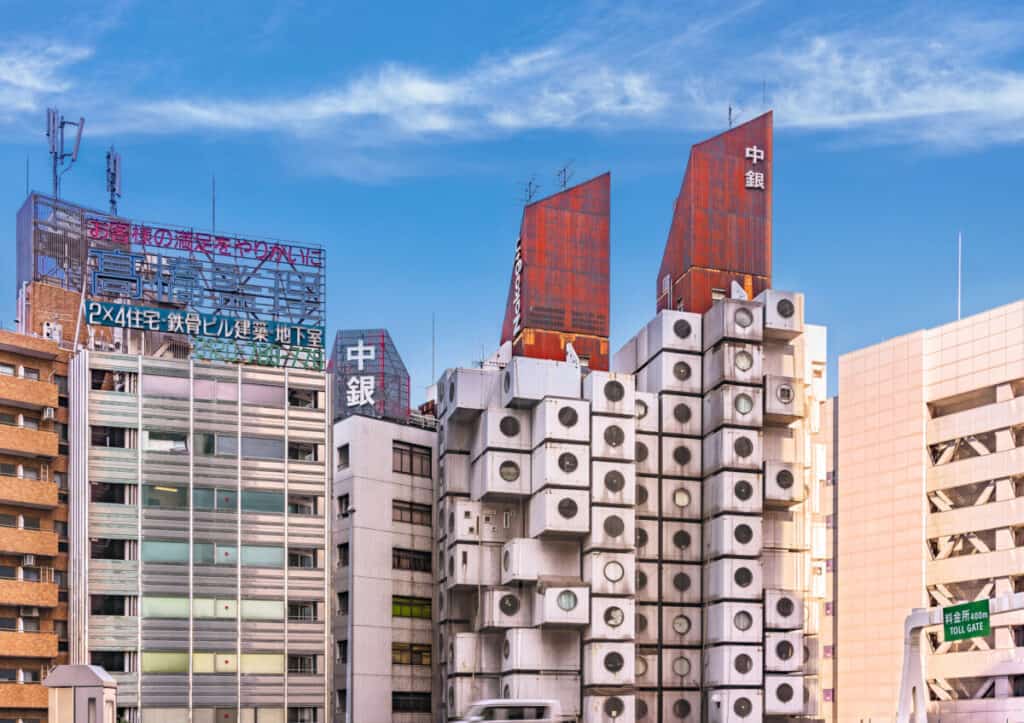
Tokyu Plaza Omotesando in Harajuku
The walls and ceiling of Tokyo Plaza’s entry area are covered in geometrically patterned mirrors.
People will be posing for photos at the top, bottom, and on the escalator.
The futuristic reflections add a new dimension to self-portraits and street photography.
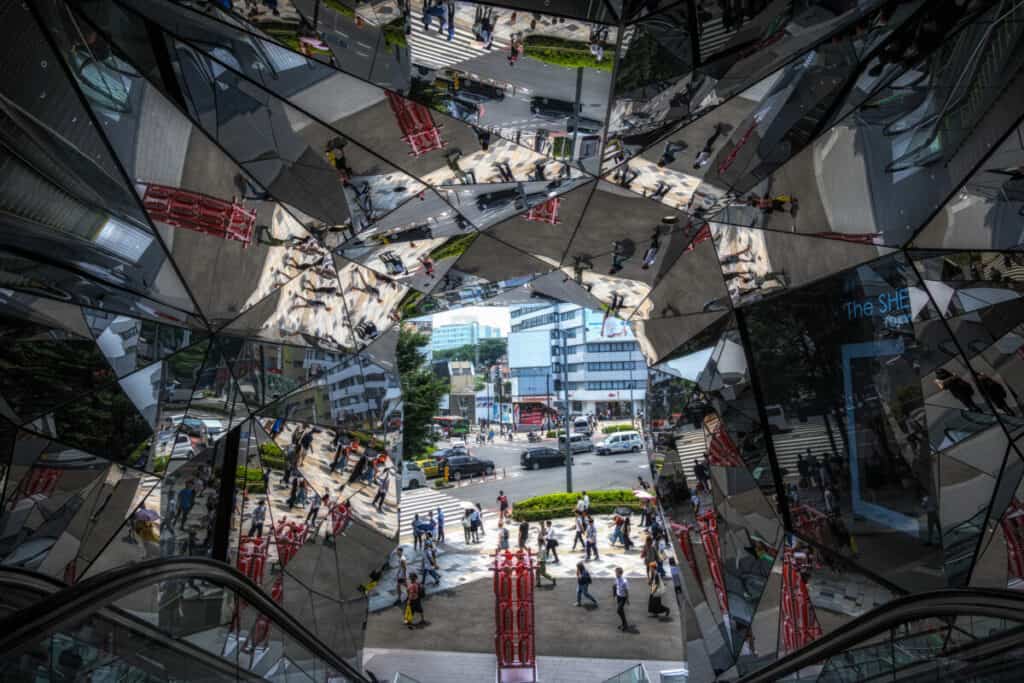
Tokyo’s Rainbow Bridge
The multicolored Rainbow Bridge and its light displays, which connect Odaiba and Shibaura Pier, have become significant tourist destinations.
The Rainbow Bridge, built in the 1990s and surrounded by prominent tourist sites, has allowed this portion of Tokyo Bay to grow.
Tokyo’s Rainbow Bridge Official Website
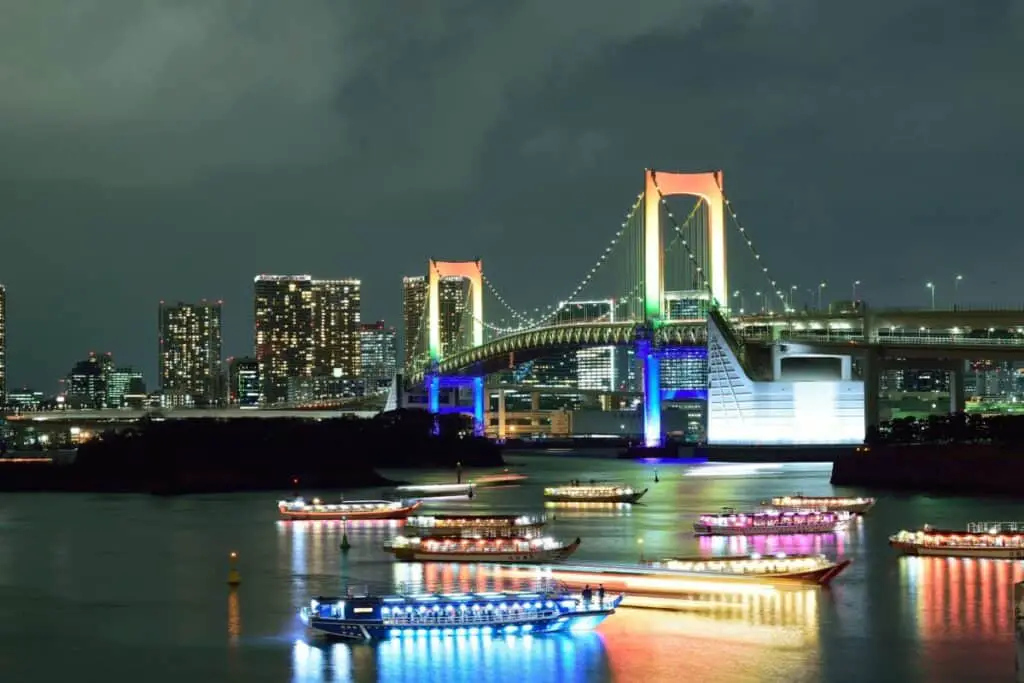
Hie Jinja Shrine
Kyoto’s Fushimi Inari shrine features a slew of Instagram-worthy red torii gates. However, if your exploring Tokyo, you may achieve the same photographic effect without having to fly to Kyoto.
The Hie Jinja Shrine is bisected by a torii gate-lined pathway. This temple is smaller and hence less crowded, making it even easier to snap stunning photos without having to worry about others getting in the way.
Hie Jinja Shrine Official Website
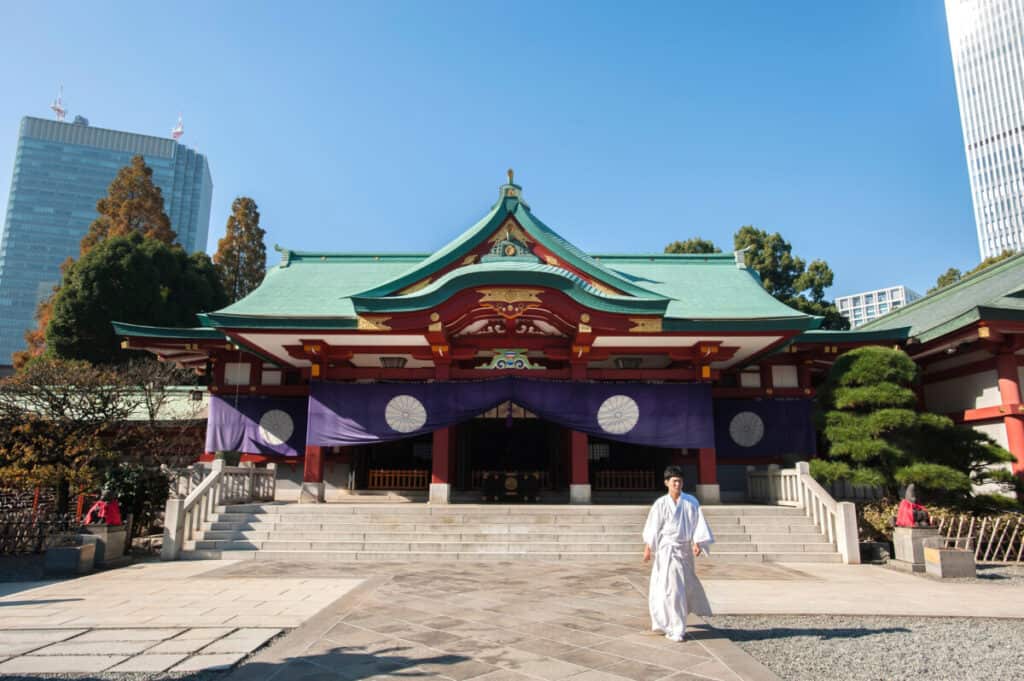
Harajuku
Harajuku is the pulsing core of Tokyo’s young culture, and it’s why you should go. Cosplayers assemble in this town region, dress up and visit Yoyogi Park.
Cosplayers can still be seen here, although things have changed, and they are much less frequent these days. However, there are many other things to draw a competent photographer’s attention here.
The upper end of Takeshita Street is one such spot, with a clear line of sight down this famous shopping street. The mass of people moving down the road makes for a terrific photo opportunity.
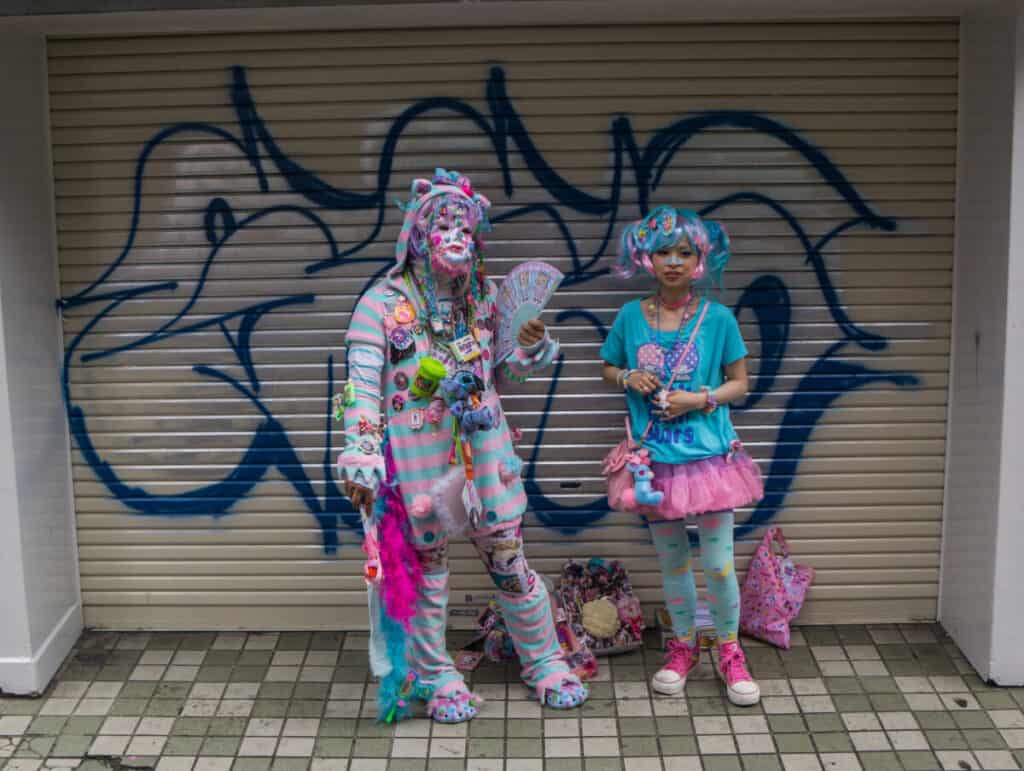
Akihabara
Akihabara is Tokyo’s anime and otaku cultural epicentre. Along with brightly lighted electronics stores and cartoon-themed cafés, fans costumed as their favorite characters are likely to be seen.
Yoyogi Park
Yoyogi Park is a central municipal park in Tokyo, including extensive lawns, ponds, and wooded areas. It’s an excellent location for jogging, picnics, and other outdoor activities.
While having fewer cherry trees compared to other Tokyo locations, Yoyogi Park is an extremely popular cherry blossom viewing destination in the spring. Its ginkgo tree forest is also noted, which turns a brilliant golden color in the autumn and makes for stunning photographs.
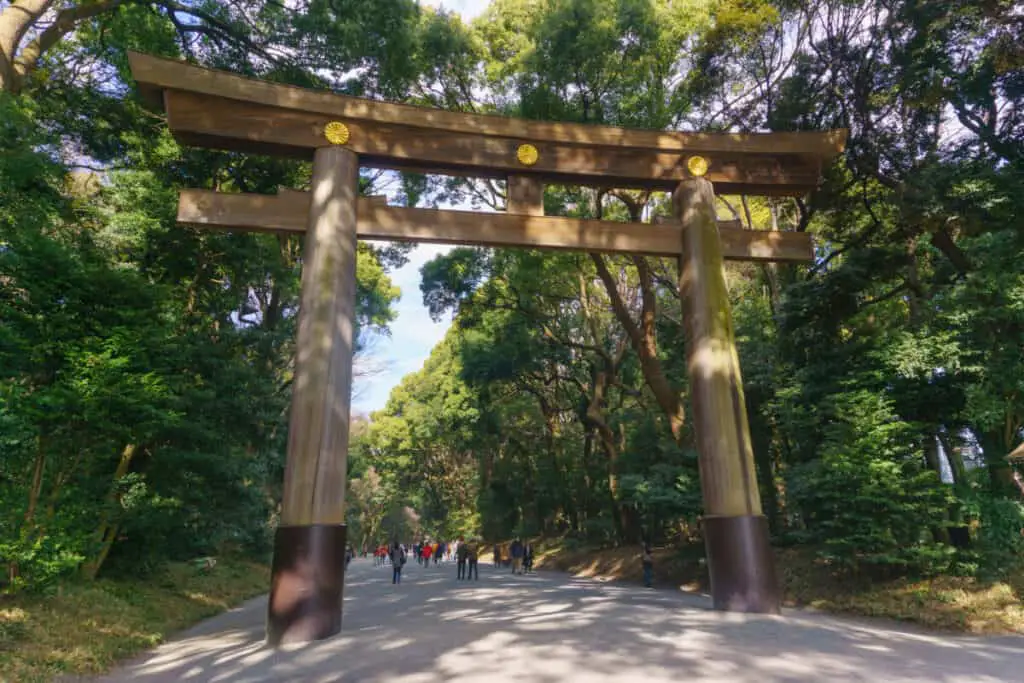
The Shibuya Crossing
Shibuya Crossing, often known as Japan’s Times Square, is a great place to take photos in Tokyo.
Shibuya Crossing is the busiest pedestrian crossing in the world, with about a million people passing through each day, and it is surrounded by Tokyo’s famous neon lights.
Many film crews use Shibuya Crossing for movies and television shows so you might not be the only photographer there.
Shibuya Crossing Location Via Google Maps
